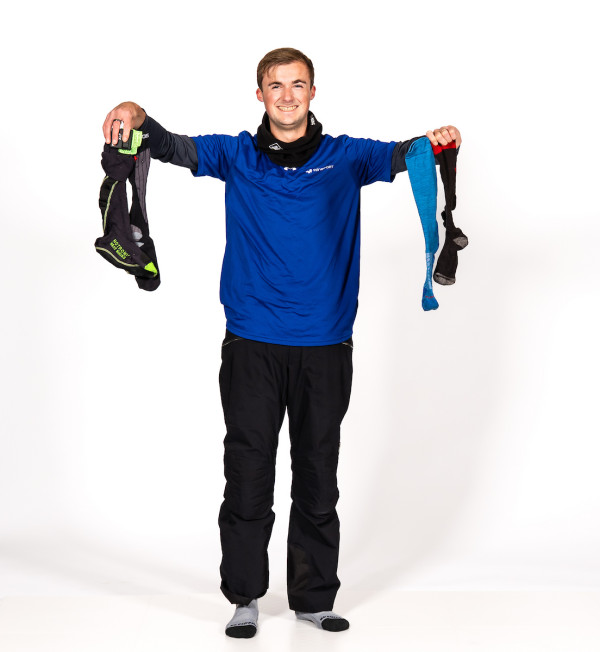Dress for Winter Success 101
Dressing yourself or your child for success is the first step towards having a comfortable experience on the slopes, regardless of the weather.
Mandatory clothing for all weather conditions
The following clothing items are considered mandatory, and you may not be able to participate in your lesson if your attire does not include:
- Long pants (water-resistant)
- Long-sleeved outer layer (water-resistant)
- Gloves or mittens, especially below -6oC (water-resistant)
You can expect to fall down in the snow when learning to ski or snowboard, so wearing water-resistant outer layers will ensure warmth by keeping you and your inner layers dry.
Key considerations when getting ready
- Check WinSport’s most up-to-date expected weather conditions and take note of:
- Windchill temperature – Often called the ‘feels-like’ temperature, this number takes the wind conditions into account
- Precipitation – Our programs run whether it’s sunny or snowing, and snowy days often feel colder
- Factor in the time and daylight – Temperatures can drop significantly when the sun goes down, so be especially prepared for colder conditions in late-afternoon and evening programs
- Wear a suitable pair of socks (more information below)
- Wear thinner clothing items for your inner layers, and thicker clothing items for your outer layers
- Wear non-cotton and other non-moisture-wicking materials (consider wool or synthetic materials)
- Avoid anything that will restrict movement
Sunscreen: It may not feel warm, but the sun’s intensity is increased when reflected off the snow. Sunscreen is recommended to be worn during all programs throughout the day, regardless of the temperature.
In the drop-down menus below, the recommended clothing for various temperatures and weather conditions are provided. Always check the forecast beforehand and select the applicable drop-down to see how to best dress for success in WinSport ski and snowboard programs.
- Base-layer top or moisture-wicking long-sleeved shirt
- Lightweight pants or shorts under your snowpants
- Long ski or snowboard socks
- Snowpants, or less-insulated waterproof rain pants if preferred
- Waterproof jacket or lightweight ski jacket (recommended to be non-insulated)
- Lightweight gloves or mittens (recommended to be waterproof)
- Lightweight neck covering
- Goggles or sunglasses with UV protection
Insulated or not?
If using a “shell” outer-layer (jacket or snowpants with no insulation), layer up with warmer base and mid-layers as the temperatures drop!
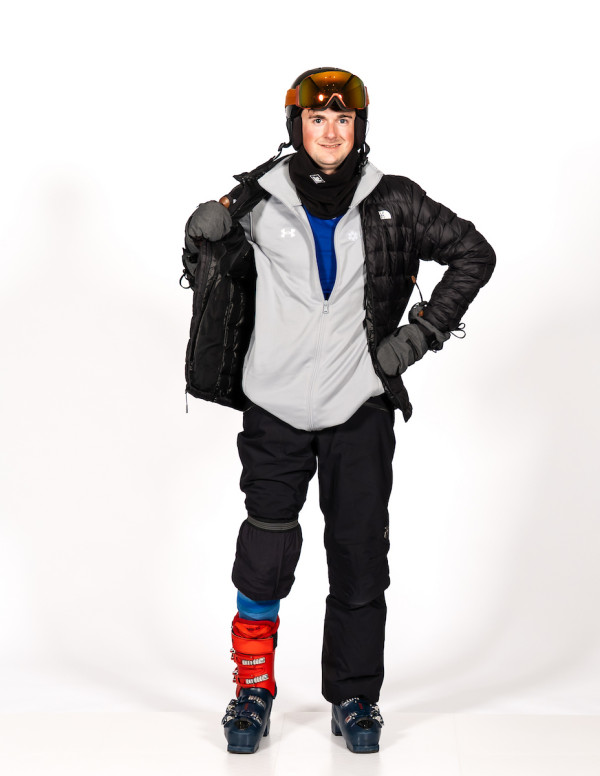
Light-to-medium-weight base-layer top
- Light-to-medium-weight base-layer pants
- Mid-layer light hoodie or fleece
- Snowpants (recommended to be insulated)
- Insulated jacket
- Long ski or snowboard socks
- Neck covering
- Lightweight gloves or mittens (recommended to be waterproof)
- Liner gloves
- Toe and hand warmers (recommended)
- Goggles or sunglasses with UV protection
Insulated or not?
If using a “shell” outer-layer (jacket or snowpants with no insulation), layer up with warmer base and mid-layers as the temperatures drop!
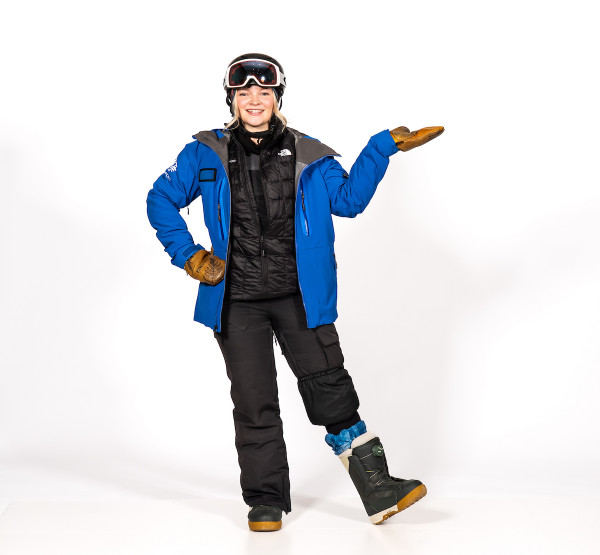
- Heavy weighted base-layer top
- Heavy weighted base-layer pants (long pyjamas or sweatpants are also good options)
- Light fleece
- Insulated mid-layer jacket, crewneck, or hoodie
- Snowpants (recommended to be insulated)
- Insulated jacket
- Long ski or snowboard socks
- Warm neck covering or balaclava (ensure it fits under your helmet)
- Warm gloves or mitts (recommended to be waterproof)
- Liner gloves
- Toe and hand warmers (strongly recommended)
- Goggles with UV protection (strongly recommended)
Insulated or not?
If using a “shell” outer-layer (jacket or snowpants with no insulation), layer up with warmer base and mid-layers as the temperatures drop!
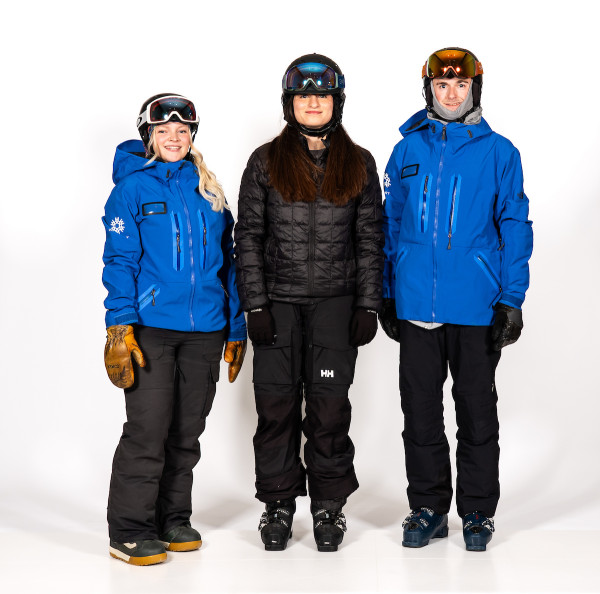
Tips & Tricks
Give your hand or toe warmers a proper shake and wait for them to warm up before putting them in your gloves/mittens or boots.
Open the toe buckles on your ski boots or loosen your snowboard boots if you notice your toe warmers cooling off too quickly. Remember to tighten them back up before skiing or riding again!
Hand and toe warmers
Hand and toe warmers can be used inside your gloves/mittens and boots.
Monitor any direct contact with skin to avoid any adverse effects.
Place handwarmers in the handwarmer pocket of your gloves or mittens, or inside the mitten against the back of your hand (not your palm).
Place or stick toe warmers against top of your toes before putting your boots on.
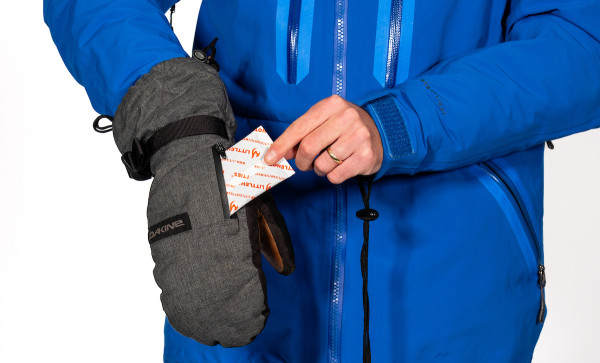
Baselayer and sock materials
An adequate set of base-layers and socks can greatly impact the quality of your experience on the slopes. Here are some materials to remember when choosing your socks and base layers:
Cotton can lead to sweating and is not recommended for skiing or snowboarding. Wet clothes prevent you from keeping warm, so avoid cotton, particularly if it is close to the skin.
Wool is naturally moisture wicking, retains warmth when wet, and breathes easily. Try it on before purchasing to make sure it’s not too itchy.
Merino wool is a type of wool that is naturally odor resistant, which makes it a great material for base-layers and socks. However, it does come at a more premium price.
Synthetic materials used in base-layers and socks have been developed to be moisture-wicking and breathable. Also, they can be more suitable than wool for those with sensitive skin or a wool allergy. Synthetic materials are often polyester blended with wool and elastane.
Skiers and snowboarders use specific ski or snowboard socks in their boots to ensure a consistent fit and to keep their feet warm and comfortable while riding. With many different types of socks to select between, this guide is designed to help you pick the best socks for you to have an ideal experience on the slopes.
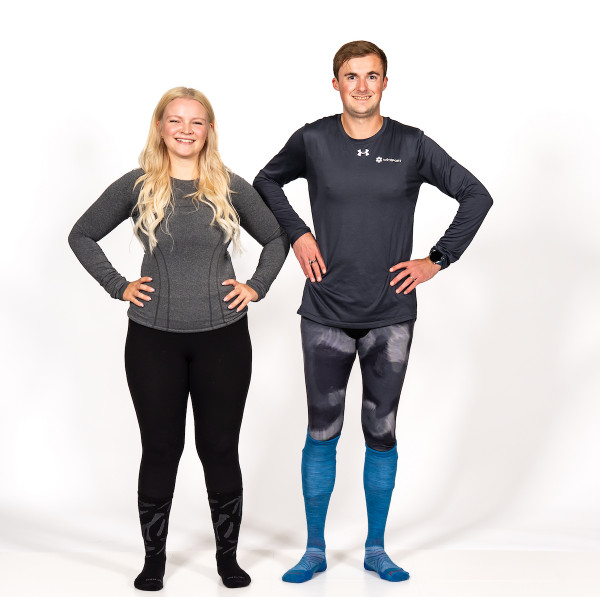
Length and circulation considerations
Ski or snowboard socks must extend above the calf to ensure full coverage within your boots and ensure a consistent and secure fit. It may be tempting to wear multiple pairs or very thick socks to keep warm, although it may result in decreased circulation to your feet and be colder than wearing a thinner sock. Sometimes, less is more!
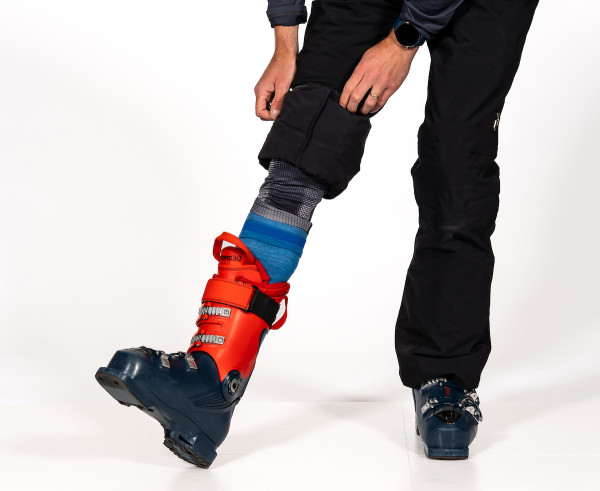
Sock types
Full-cushion socks are thicker and offer padding all around your feet. They help to absorb impacts and can offer more warmth in colder conditions. Full-cushion socks are ideal for new skiers or snowboarders with plenty of affordable options to choose from.
Targeted cushion socks offer cushioning where it is required most (shins, heels, toes, and over top of your foot). This option is great for intermediate or advanced skiers looking to get more control from their boots.
Zero-cushion socks are intended to offer the most control. They are often used by advanced skiers or snowboarders desiring more responsiveness from their boots and a terrain-like feel under their feet.
Heated socks come in a variety of different styles and materials. While more expensive, they are often worth the investment. Most skiers and snowboarders will try them on in a retail store, speak to an expert, and try on multiple options before purchasing. Heated socks are most common for in-bounds skiing and snowboarding.
